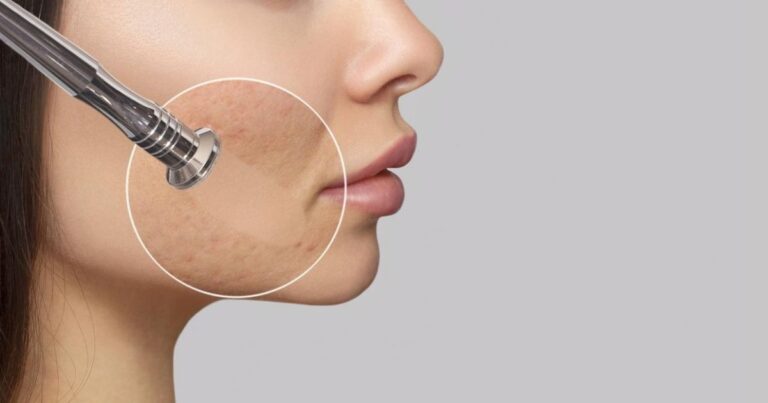Wondering if your breasts are sagging—or just naturally sitting lower than you’d like? You’re not alone. Breast shape and position change over time due to aging, weight changes, pregnancy, or even genetics. But how do you really know if they’re sagging or if it’s just a normal variation?
In this article, we’ll explain how to measure if your breasts are sagging, signs to look for, and when it might be time to consider supportive bras, exercises, or cosmetic options. No judgment—just the facts to help you feel more confident and informed about your body.
Understanding Breast Sagging
What is breast ptosis?
Breast ptosis, commonly known as sagging, refers to the drooping of the breasts. This condition occurs when the breast tissue and skin lose their elasticity, causing the breasts to hang lower on the chest.
While breast ptosis is a natural part of aging, it can also be influenced by various factors such as genetics, lifestyle, and hormonal changes. Understanding breast ptosis is crucial for determining whether your breasts are sagging and to what extent.
Book A Consultation With Dr Tarek Bayazid
Top-rated Plastic Surgeon For Breast Augmentation in Dubai
Installment Plan Available
Normal changes vs. excessive sagging
It’s important to differentiate between normal changes in breast appearance and excessive sagging. As women age, it’s natural for breasts to lose some firmness and elasticity. However, excessive sagging may indicate a more significant loss of support in the breast tissue. Recognizing the difference can help you decide if further evaluation or intervention is necessary.
Factors affecting breast firmness
Several factors can affect breast firmness, including age, genetics, hormonal changes, and lifestyle choices. For instance, smoking and significant weight fluctuations can contribute to the loss of skin elasticity. Additionally, pregnancy and breastfeeding can alter breast shape and firmness. Understanding these factors can help you take proactive steps to maintain breast firmness.
- Age and genetics
- Hormonal changes
- Lifestyle choices (e.g., smoking, diet)
- Pregnancy and breastfeeding
The Pencil Test for Breast Sagging
How to perform the pencil test
The pencil test is a simple method to assess breast sagging. To perform the test, place a pencil under the crease of your breast. If the pencil stays in place without support, it may indicate some degree of sagging. This test is a quick and easy way to get a preliminary idea of your breast firmness.
Interpreting pencil test results
Interpreting the results of the pencil test involves understanding what it means if the pencil stays in place. If the pencil falls, your breasts are likely firm. However, if it stays, it suggests that the breast tissue may be sagging enough to hold the pencil. While this test provides a basic assessment, it should not be the sole method for evaluating breast sagging.
Limitations of the pencil test
The pencil test has its limitations. It does not provide a comprehensive assessment of breast sagging and may not be accurate for all body types. Additionally, it does not account for other factors such as breast size or shape. For a more thorough evaluation, consider other methods or consult a professional.
- Quick and easy
- Not comprehensive
- May not be accurate for all body types
Alternative Methods to Assess Breast Sagging
Visual assessment techniques
Visual assessment techniques involve examining the breasts in a mirror to evaluate their position and shape. Look for signs of sagging, such as nipples pointing downward or a noticeable change in breast contour. This method allows for a more detailed evaluation compared to the pencil test.
Measuring nipple position
Measuring the position of the nipples in relation to the breast crease can provide insight into breast sagging. Use a measuring tape to determine the distance from the nipple to the breast crease. A significant distance may indicate sagging. This method offers a more precise assessment than visual techniques alone.
Professional evaluation by a plastic surgeon
For a comprehensive evaluation, consider consulting a plastic surgeon. A professional can assess breast sagging using advanced techniques and provide personalized recommendations. This option is ideal for those considering surgical or non-surgical interventions.
- Visual examination
- Measuring nipple position
- Professional consultation
Causes of Sagging Breasts
Age and hormonal changes
Age and hormonal changes are primary causes of breast sagging. As women age, the skin loses elasticity, and hormonal fluctuations can affect breast tissue. These changes are natural and often unavoidable, but understanding them can help in managing expectations.
Pregnancy and breastfeeding
Pregnancy and breastfeeding can significantly impact breast shape and firmness. During pregnancy, breasts enlarge, and after breastfeeding, they may not return to their original size or shape. These changes can contribute to sagging over time.
Weight fluctuations and genetics
Weight fluctuations and genetics also play a role in breast sagging. Rapid weight gain or loss can stretch the skin, leading to sagging. Additionally, genetic factors can determine skin elasticity and breast tissue density, influencing how breasts change over time.
- Age and hormonal changes
- Pregnancy and breastfeeding
- Weight fluctuations and genetics
Preventing Breast Sagging
Proper bra support
Wearing a properly fitted bra can provide essential support to prevent sagging. A good bra helps maintain breast shape and reduces strain on the skin and tissue. Regularly check your bra size to ensure optimal support.
Maintaining a healthy weight
Maintaining a healthy weight can prevent excessive stretching of the skin, reducing the risk of sagging. A balanced diet and regular exercise can help manage weight and promote overall skin health.
Chest-strengthening exercises
Engaging in chest-strengthening exercises can improve muscle tone and support breast tissue. Exercises like push-ups and chest presses target the pectoral muscles, providing a natural lift to the breasts.
- Proper bra support
- Healthy weight maintenance
- Chest-strengthening exercises
Non-Surgical Solutions for Sagging Breasts
Breast-firming creams and serums
Breast-firming creams and serums can enhance skin elasticity and firmness. These products often contain ingredients like collagen and elastin, which support skin structure. While results may vary, they can be a non-invasive option for improving breast appearance.
Targeted exercises for chest muscles
Targeted exercises for chest muscles can help lift and firm the breasts. Incorporating exercises like dumbbell flyes and chest presses into your routine can strengthen the underlying muscles, providing a natural lift.
Posture improvement techniques
Improving posture can enhance breast appearance by lifting the chest and reducing the appearance of sagging. Practice standing and sitting with your shoulders back and chest lifted to promote better posture.
- Breast-firming creams and serums
- Targeted chest exercises
- Posture improvement techniques
Surgical Options for Breast Lifting
Types of breast lift procedures
There are several types of breast lift procedures, each tailored to different levels of sagging. Common procedures include the crescent lift, vertical lift, and anchor lift. Each technique varies in complexity and recovery time.
Candidacy for breast lift surgery
Candidacy for breast lift surgery depends on factors such as overall health, breast size, and the degree of sagging. A consultation with a plastic surgeon can determine if you are a suitable candidate for the procedure.
Recovery and expected results
Recovery from breast lift surgery involves a period of rest and limited physical activity. Most patients can return to normal activities within a few weeks. The results typically include a more lifted and youthful breast appearance.
- Types of procedures
- Candidacy considerations
- Recovery and results
Final Thoughts
Breast sagging is a natural part of aging and body changes—but understanding where you stand can help you make informed choices. Whether you go for supportive bras, exercises, or medical options, the goal is simple: to feel confident and comfortable in your own skin.
FAQs
What is considered sagging breasts?
Sagging breasts are typically characterized by a noticeable droop or downward pointing of the nipples. This condition can vary in severity and is influenced by factors such as age, genetics, and lifestyle. Understanding what constitutes sagging can help in assessing your own breast condition.
Can exercises lift sagging breasts?
Exercises can help lift sagging breasts by strengthening the underlying chest muscles. While they may not completely reverse sagging, they can improve overall breast appearance and support. Consistent exercise can contribute to a firmer and more lifted look.
At what age do breasts start to sag?
Breasts can start to sag at different ages, depending on individual factors such as genetics and lifestyle. However, noticeable sagging often begins in the late 30s to 40s. Maintaining a healthy lifestyle can help delay the onset of sagging.
How can I prevent my breasts from sagging?
Preventing breast sagging involves maintaining a healthy weight, wearing supportive bras, and engaging in chest-strengthening exercises. These practices can help preserve breast firmness and delay sagging. Additionally, avoiding smoking and excessive sun exposure can protect skin elasticity.
Is it normal for breasts to sag after pregnancy?
It is normal for breasts to sag after pregnancy due to changes in breast size and skin elasticity. Hormonal fluctuations and breastfeeding can also contribute to sagging. Understanding these changes can help manage expectations and explore options for improvement.
Can wearing a bra prevent breast sagging?
Wearing a bra can provide support and reduce strain on breast tissue, potentially preventing sagging. However, it is not a guaranteed solution, as other factors like genetics and lifestyle also play a role. A well-fitted bra can contribute to overall breast health.
How accurate is the pencil test for breast sagging?
The pencil test is a simple method to assess breast sagging, but it is not highly accurate. It provides a basic indication of sagging but does not account for individual differences in breast shape and size. For a more accurate assessment, consider professional evaluation.
Are there any natural remedies for lifting sagging breasts?
Natural remedies for lifting sagging breasts include exercises, maintaining a healthy weight, and using firming creams. While these methods may not provide dramatic results, they can improve overall breast appearance. Consistency is key to seeing noticeable changes.








